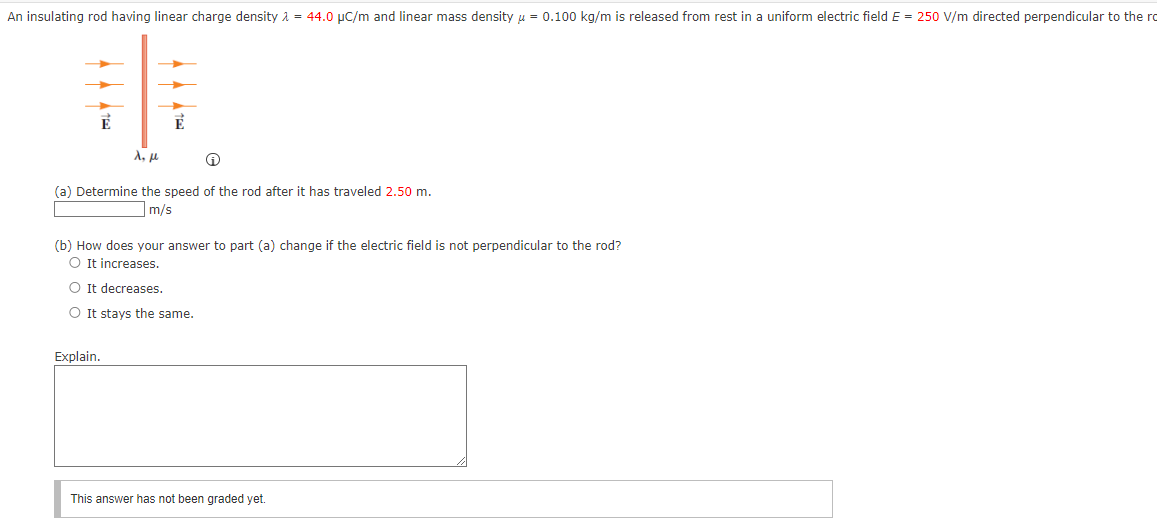An insulating rod having linear charge density = 44.0 μC/m and linear mass density μ = 0.100 kg/m is released from rest in a uniform electric field E = 250 V/m directed perpendicular to the r λ, μ (a) Determine the speed of the rod after it has traveled 2.50 m. m/s (b) How does your answer to part (a) change if the electric field is not perpendicular to the rod? ○ It increases. ○ It decreases. It stays the same.
An insulating rod having linear charge density = 44.0 μC/m and linear mass density μ = 0.100 kg/m is released from rest in a uniform electric field E = 250 V/m directed perpendicular to the r λ, μ (a) Determine the speed of the rod after it has traveled 2.50 m. m/s (b) How does your answer to part (a) change if the electric field is not perpendicular to the rod? ○ It increases. ○ It decreases. It stays the same.
Related questions
Question
Needs Complete explanation and correct solution don't use chat gpt or ai. I definitely upvote you.

Transcribed Image Text:An insulating rod having linear charge density λ = 44.0 μC/m and linear mass density μ = 0.100 kg/m is released from rest in a uniform electric field E = 250 V/m directed perpendicular to the ro
λ, μ
(a) Determine the speed of the rod after it has traveled 2.50 m.
m/s
(b) How does your answer to part (a) change if the electric field is not perpendicular to the rod?
○ It increases.
○ It decreases.
It stays the same.
Explain.
This answer has not been graded yet.
Expert Solution
This question has been solved!
Explore an expertly crafted, step-by-step solution for a thorough understanding of key concepts.
Step by step
Solved in 3 steps with 10 images
